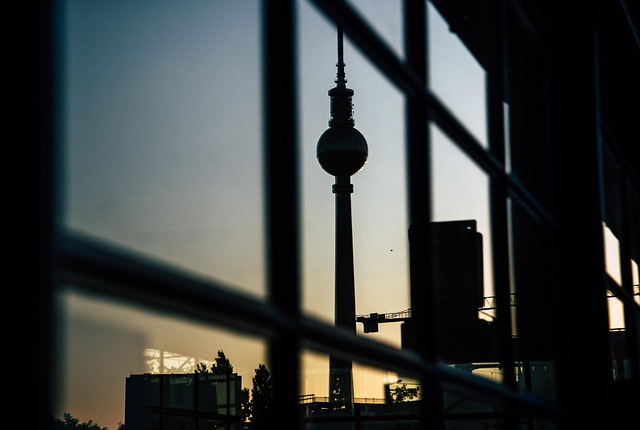Karachi, Pakistan's largest city, is a cultural hub with a vibrant historical landscape defined by its stunning mosques that reflect Persian, Mughal, and British influences. These architectural marvels serve as both places of worship and living historical records, drawing tourists from all over the world. Today, Karachi's mosques remain integral to the community, functioning as gathering spaces for prayers and cultural events while showcasing the city's ongoing evolution. Iconic mosques like Masjid-e-Karachi, Imambara Shahi, and Jamia Masjid highlight the unique blend of history and modern architecture in the heart of vibrant Karachi.
Karachi, a vibrant metropolis with a rich historical tapestry, boasts an intricate network of mosques that reflect its diverse cultural heritage. Among these, the area surrounding Amir Khusro stands out, housing some of the city’s most notable and historically significant places of worship. This article delves into the historical context of Karachi’s mosques, highlights the architectural marvels near Amir Khusro, explores their cultural and spiritual significance, and offers insights for tourists eager to experience the city’s unique charm.
- Historical Context of Karachi's Mosques
- – Overview of Karachi's rich historical and cultural background
- – Significance of mosques in the development of the city
- Notably Famous Mosques in Close Proximity to Amir Khusro
Historical Context of Karachi's Mosques

Karachi, a vibrant metropolis and cultural hub, boasts a rich historical landscape adorned with mosques that hold immense architectural and religious significance. The city’s mosques are not merely places of worship but stand as testaments to its diverse heritage, dating back centuries. Each mosque tells a story of the era it was constructed in, reflecting the artistic and cultural influences of the time.
The historical context of Karachi’s mosques is deeply intertwined with the city’s growth and transformation over the years. Many of these structures were built during the rule of various empires, each leaving its mark on the architectural style and design. From the ancient to the modern era, Karachi’s mosques have been a central part of the community, serving as gathering spaces for prayers, cultural events, and fostering a sense of unity among diverse populations. They are not just landmarks but living historical records, inviting visitors to explore the city’s past and its evolution.
– Overview of Karachi's rich historical and cultural background

Karachi, a vibrant metropolis and the largest city in Pakistan, boasts a rich historical and cultural background that is reflected in its diverse architecture and places of worship. Known as the financial hub of the country, Karachi has been a melting pot of cultures for centuries, with influences from various civilizations including the Persian, Mughal, and British eras. This unique blend has resulted in stunning structures and landmarks across the city.
The city’s history is deeply intertwined with its role as a significant trading port, attracting merchants and artisans from around the world. As a result, Karachi is home to a variety of mosques that showcase architectural styles ranging from traditional Mughal designs to modern interpretations. These mosques not only serve as places of worship but also stand as testaments to the city’s cultural heritage and the diverse communities that call Karachi home.
– Significance of mosques in the development of the city

Mosques, as vibrant centers of faith and community, have played a pivotal role in shaping the urban landscape of Karachi. Their influence extends far beyond religious practices, serving as landmarks that define the city’s cultural identity. The architectural splendor and historical narratives associated with these mosques make them not just places of worship but also significant tourist attractions, drawing visitors from all corners.
In the heart of Karachi, many mosques stand as testaments to the city’s rich heritage. These structures, often designed with intricate detail, reflect the diverse cultural influences that have shaped the metropolis over the centuries. They double as community hubs, fostering social cohesion and serving as centers for education, charity, and cultural events. The presence and development of mosques in Karachi thus contribute substantially to the city’s unique character, making them integral to its ongoing narrative.
Notably Famous Mosques in Close Proximity to Amir Khusro

In the vibrant city of Karachi, where history intertwines with modern architecture, several renowned mosques stand in close proximity to the iconic Amir Khusro. Among these, the Masjid-e-Karachi, known for its magnificent Gothic Revival design, is a sight to behold. This grand mosque has been a landmark since 1846 and continues to be a gathering place for prayers and community events. Just a stone’s throw away, one finds the historic Imambara Shahi, a complex that includes an impressive mosque with intricate Persian architecture. Its magnificent dome and delicate tile work make it a must-visit site for those exploring Karachi’s rich cultural heritage.
Additionally, the Jamia Masjid, located nearby, is another notable place of worship. This massive mosque can accommodate thousands of devotees and boasts beautiful stained glass windows that cast colorful patterns on the walls during prayers. These mosques not only serve as houses of worship but also stand as symbols of Karachi’s diverse religious landscape, reflecting a rich tapestry of architectural styles and cultural influences.
Karachi, with its vibrant history, boasts a stunning array of mosques that have played a pivotal role in shaping the city’s cultural landscape. Among these, the mosques near Amir Khusro stand out as iconic landmarks, reflecting the rich architectural and spiritual heritage of the region. Exploring these sacred spaces offers a glimpse into Karachi’s past, where faith and community have thrived for centuries. Whether visitors are captivated by the historical context or simply seeking peaceful reflection, these mosques serve as a testament to the enduring significance of religious sites in urban development.



